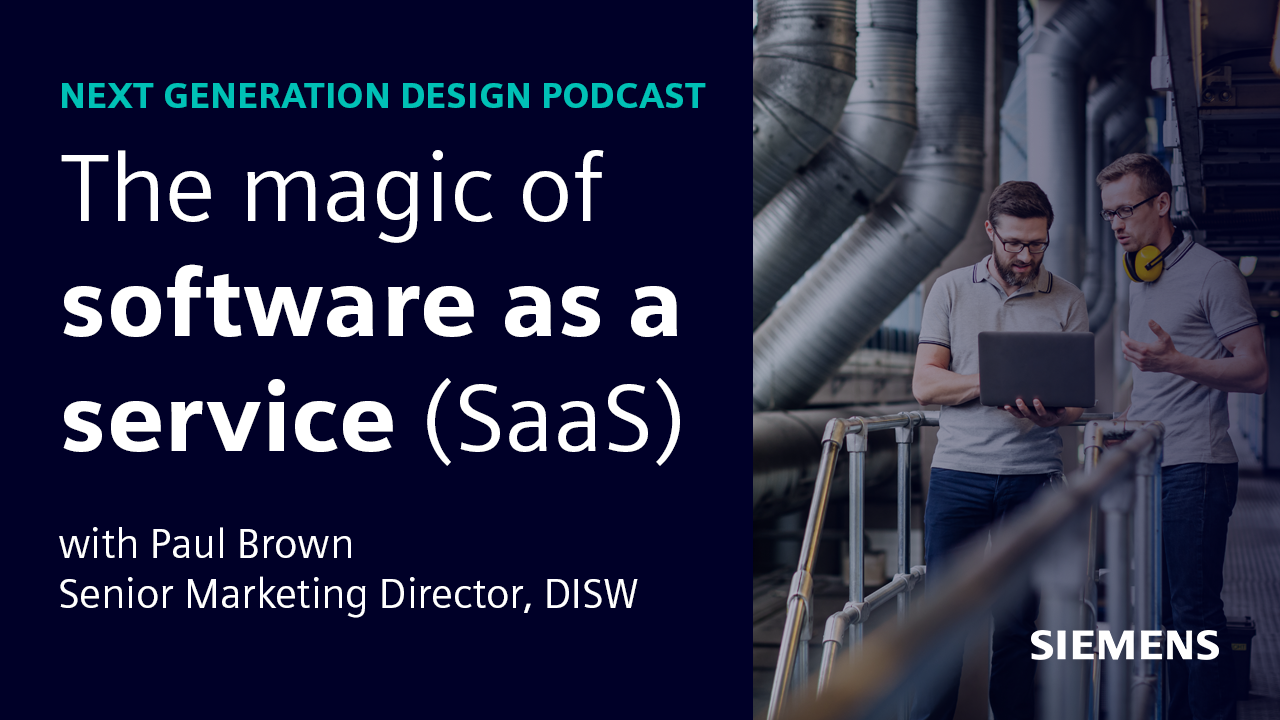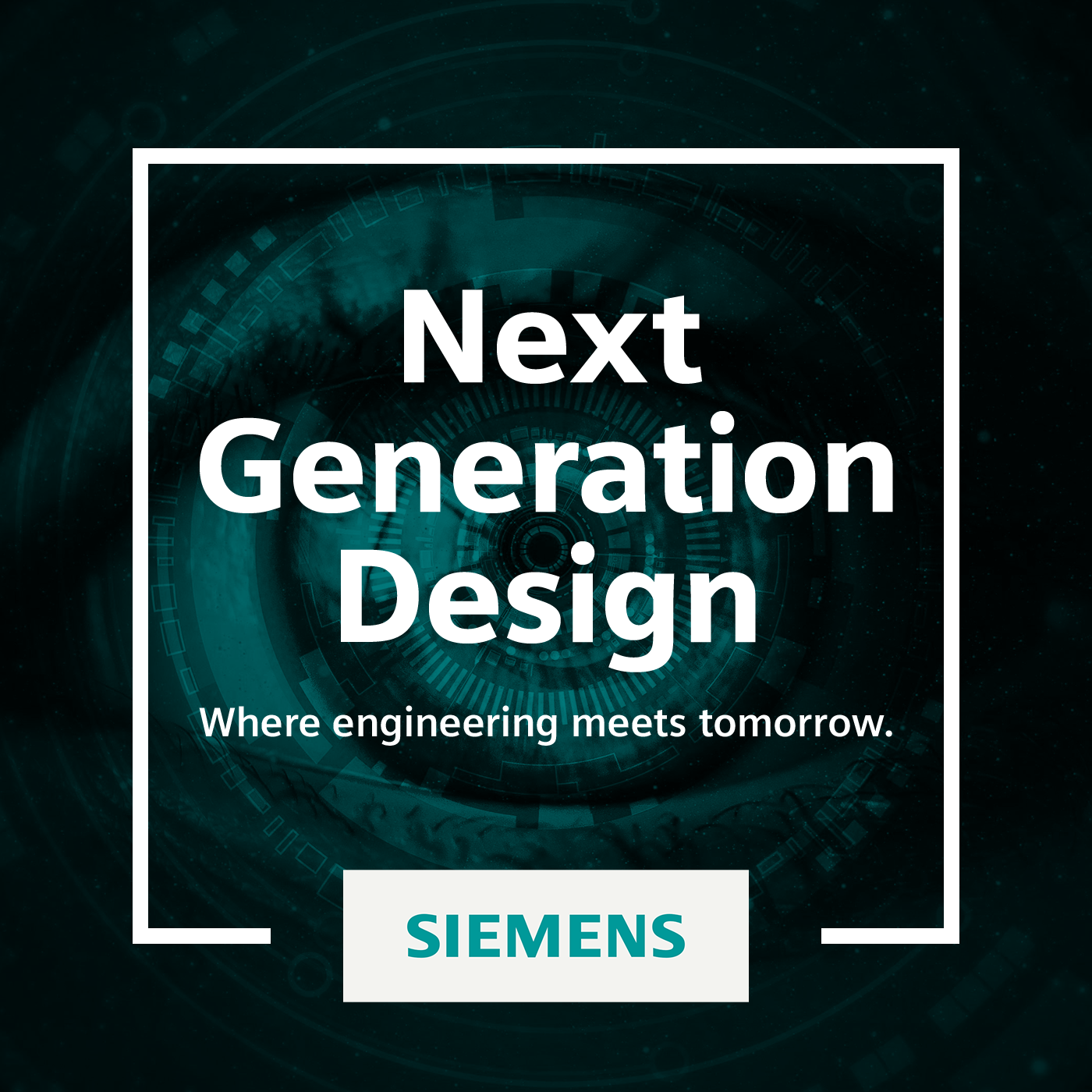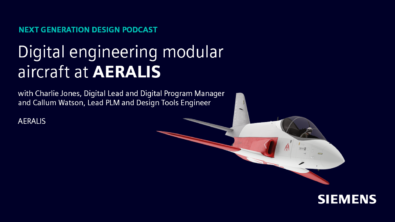The Magic of Software as a Service (SaaS)

Adopting new technologies allows businesses to expand their capabilities and keep up with the competition. However, new technology can sometimes become too difficult to maintain, requiring extra costs to run securely. To solve this problem, companies are now offering their software products as a service, eliminating the need for customers to perform tasks such as installing, updating, and security.
On this episode of the Next Generation Design podcast, our host Jennifer Piper is joined by Paul Brown, Senior Marketing Director at Siemens Digital Industries Software. He’ll help us understand what software as a service (SaaS) is and why it has become popular among companies.
In this episode, you’ll learn about the benefits of SaaS to companies and users. You’ll also learn about the different products that Siemens offers as SaaS, including the most recent addition. Additionally, Paul will share his views on the future of SaaS and why it should not be seen as a replacement for desktop solutions.
What You’ll Learn in this Episode:
- Why companies are adopting SaaS
- Why Siemens started availing products as SaaS
- The different products that Siemens offers as SaaS
- The Future of SaaS
- Siemens new SaaS product
If you’re thinking about cloud and SaaS, you need to really think about what your business goals are... You need to know what you’re trying to achieve. And when you have that in mind, then you can start setting up strategies for how you get there.
Paul Brown, Siemens Digital Industries Software
Listen to the Next Generation Design podcast wherever you do podcasts.
Connect with Paul Brown:
Connect with Jennifer Piper:
Listen to or read the next episode of the Next Generation Design podcast: Integrating Siemens Software and Tools in Engineering Education
Listen to or read the previous episode of the Next Generation Design podcast: Designing For Speed using NX CAD
Podcast Transcript
Paul Brown: SaaS products and the idea of SaaS in cloud really work in conjunction and add value to existing environments. It’s not an either-or discussion. It’s actually a ‘use what suits you best for your business challenges.’
Jennifer Piper: Welcome to the Next Generation Design podcast. I’m your host, Jennifer Piper. Today, I’m talking to Paul Brown, Senior Marketing Director at NX, about Software as a service, how to tell if it may be a good fit for your company, and where he sees the strategy headed in the future. Before we begin, let’s meet today’s guest. Paul, welcome to the podcast. Could you please introduce yourself and your role to our listeners?
Paul Brown: Hi, Jen, great to talk to you again. I lead the PES, Product Engineering Services Marketing Team. We’re really looking at how we can apply the products that we develop — which are NX, Fibersim, and Mastertrim — and how they can be applied by our customers, how we can get the message out about the uses of our customers, and how they perform to help our customers really enhance their business.
Jennifer Piper: Paul, thank you for being with us today. To start us off, I’d like to talk about SaaS. I know it’s a hot topic these days, so what can you tell our audience about it?
Paul Brown: Well, I think the whole topic of SaaS really has come together more about the connectivity of everything and tying things together using Software as a Service and cloud technologies to make technology more accessible for companies, for individuals, giving them access to technology wherever they are in the world. And I think that as we’ve gone through the past couple of years, we’ve really found that that whole need to be connected, to carry on business from distributed environments has become more and more important. And I think that over the last couple of years, it’s become really the norm for companies. So, SaaS really allows us to deliver applications, which customers and companies can access from multiple devices wherever they are in the world in a secure environment. So, I think that that’s why it’s so interesting to people, and that’s why companies are now really looking at it as to how can it help me in this new age of having people that are not always co-located. And we are working across both national and international boundaries and working seamlessly across those environments.
Jennifer Piper: What would you say to the people who believe that moving to a SaaS solution is a difficult overhaul?
Paul Brown: Change is always going to bring a level of opportunity and a level of disruption. That’s a fact no matter what changes you make. So, that’s one of the reasons why I would always say to people, “If you’re thinking about cloud and SaaS, you need to really think about what your business goals are.” Moving over to those types of approaches just because it’s the current buzz, then that’s not a good business goal. You need to know what you’re trying to achieve. And when you have that in mind, then you can start setting up strategies for how you get there. We’ve been looking at this as how do we help our customers evolve their technologies and do that, and actually not force them into making a choice: Is it SaaS, or is it on-premise on my desktop? Being able to mix and match, being able to give applications where it’s the same application delivered in multiple ways such that you don’t have this overhead of retraining and relearning, that type of thing. And then looking at how we can expand out and actually help different groups, groups that are not traditional type users in our space in terms of design users, CAD users, but giving them more tools to how they can actually go off and do that work? So, it’s extra ways of getting value out of that data. So, is it a challenge? Any change is a challenge. But managed properly and with the right business expectations, it’s a very manageable next step for a lot of companies.
Jennifer Piper: When did Siemens start looking at moving to a SaaS strategy? It sounds like it’s been a long time coming, but there’s been a lot more excitement around this topic lately.
Paul Brown: Well, the interesting thing is there’s this whole concept of if you assume that SaaS, distributed, and cloud is around running distributed solutions, we’ve been doing that for years. We have customers that have been doing that for way over 10 years, some as many as 15 years, having a centralized software stack in locations and then serving out to users using techniques like VDI, which is Virtual Desktop. Being able to use those types of tools and having their infrastructure, we’ve had a lot of experience working with customers who want to work in that type of environment. What’s changing is really that there are more companies looking at using external hosting organizations. So, rather than managing the infrastructure themselves, rather than having their central processing compute power and then having their own staff do the management, but actually outsourcing that part of the business and focusing on what they do, which is what the customer is doing, which is developing products that they can sell or make money with. Taking away that infrastructure challenge and allowing them to manage that way. So, we’ve been involved with doing this for years, we’ve been making sure our products like NX perform in these remote access type environments really strongly, really fast. But also now we say we’re seeing more of a shift where companies are bringing in external hosting and actually taking their infrastructure and effectively handing it over to companies like AWS from Amazon or moving on to companies running Microsoft Azure and being able to host out that way.
Jennifer Piper: You mentioned on-premise and cloud options for deployment. What are the different offerings from the Siemens group around SaaS?
Paul Brown: Over the future, you’ll see more and more uses of these types of targeted applications, which give specific people in an organization more access to data. It’s about leveraging that digital twin. The digital twin is the core of what we develop with NX, it’s a 3D representation of a product. Being able to use that for more things and more downstream activities gives you more value; the more you can reuse that data, the better. That’s one of those areas where we’re looking at– how can we extend this capability. An important thing, though, is it’s all based on the same architecture and the same data. We’re not looking at people having an on-premise database, which they then have to translate to get into the cloud or move into different systems to get into the cloud. Now, underpinning all of that, obviously, we need to manage that data and we work very closely with our Teamcenter organization. There’s a product called Teamcenter X. Once again, a packaged-up delivery mechanism for PLM– data management– Product Lifecycle Management throughout the process. And our tools can work and are integrated with the Teamcenter X stack of and suite of products such that not only can you design the data, but you can manage it, you can manage the workflows and all the access. So, a number of products there, along with that. And then we have our collaboration tools, collaboration tools like Xcelerator Share. Xcelerator Share is a very fast way of ad hoc collaboration. I can put some data into Xcelerator Share. I can invite people to look at it. I can invite people to interrogate it to give me feedback on that data. Once again, looking to leverage the cloud and SaaS as a way of communicating and bringing people together.
Jennifer Piper: Do you see a lot more SaaS apps coming on the market in the future?
Paul Brown: I think it’s a pathway forward, and there will be a lot more SaaS apps coming at a far greater pace as we go forward. I think one important thing to remember is, despite everything, the desktop and on-premise is not dead, it’s not going away. Some companies want and need to have their infrastructure and manage their infrastructure themselves. There are certain industries where that whole idea of being able to have localization. If you look at defense contractors, for example, need to have that level of security and management that brings everything inside the firewall. Desktop applications are still going to be a massive way forward. The key, for us, is to be able to deliver applications that add value to our customers, build on the digital twin, but also leverage the power of the cloud, and use that same common data backbone, that same common architecture such that I can reuse my data whether it’s on the desktop, in the cloud, in apps, no matter where, you’re able to use those together.
Jennifer Piper: Before we say goodbye, I’d like to know your vision for the future of SaaS. What would you say that looks like?
Paul Brown: I think the future is, as more and more bandwidth capabilities and accessibility come up, obviously, the SaaS cloud landscape just looks stronger and stronger all the time. The download speeds and upload speeds people get, the capabilities are growing. In addition, when you look at, technology-wise, things like having remote rendering farms, capabilities are for doing high-end rendering that you outsource, you get compute time, you get that going off really quickly it comes back. There are so many benefits that we’re only just tapping into now with cloud technologies, and that constantly be growing. So, I think that that’s going to continue to drive together performance computing.
Paul Brown: We announced a new high-performance computing capability for our Simcenter set of products. So, our Simcenter simulation products for stress analysis, structural analysis, and flow analysis. Those are all challenges that when you look at taking a design and doing analysis on it, they’re very compute-heavy activities. In some companies, when you’ve got a very compute-heavy problem, to solve it quicker, you use high-performance compute, you use multiple CPUs and GPUs just to be able to compress the time to get it solved. So now we’re offering that as a service on the cloud, and are a part of our Simcenter portfolio– once again, the Simcenter X portfolio. So, overall, I think the future really is very strong for these technologies. In terms of industry adoption, I think some industries will find it easier to adopt and quicker to adopt than others. And some of that is down to the infrastructure. Consumer products and retail, for example, companies in that space are very used to working in these types of environments; they’re probably one of the early teams. Electronics and semiconductors are very similar. Some of the larger, more traditional industries such as automotive and aerospace– they have large infrastructure challenges, as they stand at the moment. So, adoption maybe will take a little bit longer in those types of companies. As well in the aerospace and defense industries, obviously, there’s the defense element of this. People involved in defense industries, because of the security demands, bring some extra challenges into that type of environment. Once again, it will impact how quickly it becomes a prevalent technology. Industrial machinery companies can get great benefits from this. Traditionally, industrial machinery companies tend to move along and follow some of the major industries like automotive because they’re very much tied together. It’s a mixed set of fields of adoption across different industries.
Jennifer Piper: Well, that’s all very exciting. And I don’t want to let you go without giving congratulations to the NX team. I believe there was a recent win for the SaaS Awards for 2022, Best SaaS Product for Engineering Management PLM or CAD.
Paul Brown: I think it was a wonderful award to win. We were looking at the companies that were being considered and their approaches to SaaS. I think the key element for us winning that award was the tying together of the traditional “desktop on-premise” environment with cloud environments to the benefit of our customers. I’m really not saying that the future is all just one way, but being able to say that for your environment, there is a solution. But the solution is around combining technologies, bringing both desktop and cloud together, and communicating. So, winning that award really was an endorsement of the view and the strategy that we’ve had all along, which is that these things have to coexist. Having separate SaaS solutions, which are not linked to my main core design environment– my main core desktop environment– is not a good solution for customers. Anywhere you have to move data around and unnaturally translate data, it adds cost and burden to users. And what we’re looking at is, how can we take that cost and burden out of the equation? And that’s by building off of a common platform, a common NX architecture, and delivering the solutions together.
Jennifer Piper: Well, congratulations again, that’s very exciting. To wrap things up, I’m wondering if you could give our audience some of your main takeaways about SaaS.
Paul Brown: SaaS products, and the idea of SaaS and cloud, really work in conjunction and add value to existing environments. It’s not an either-or discussion. It’s actually a “use what suits you best for your business challenges.” And my second point really is: this is a business discussion. This is not “Oh, it’s a cool technology.” This is a “Can I get value from my business out of this?” And whether that value comes from improved collaboration, whether that value comes from more access to solutions from anywhere in the world, and it allows me, and it’s all about access for us in a secure way. The third one is, driving forward, there are many more opportunities to look at how you can leverage these technologies– people that are not full-time CAD users, people that need access to design data or have a role to play in using this information. But you’re not going to ever want them to be learning CAD design tools; you want them to have applications. And how can we leverage cloud SaaS to make those types of tools available to those that type of user, the more casual user?
Jennifer Piper: Thanks so much for that, Paul. Those are all really helpful points.
Jennifer Piper: Paul, thank you again for speaking with us today. Hopefully, we’ll talk again soon.
Paul Brown: Great. Thank you, Jen, and look forward to speaking to you later.
Jennifer Piper: Thank you to our listeners for tuning in to today’s podcast. Join us next time for more discussions about the latest in design innovation and software applications. I’m your host, Jennifer Piper, and this has been Next Generation Design.

Next Generation Design Podcast
As product engineering tools continue to morph and expand at speeds human expertise may not be able to endure, Revolutionary design technologies that span beyond industry borders, will prove their necessity for companies looking to take over their markets in the future. What will the future of design technologies and machinery look like? What will your digitalization story be? Where engineering meets tomorrow.


